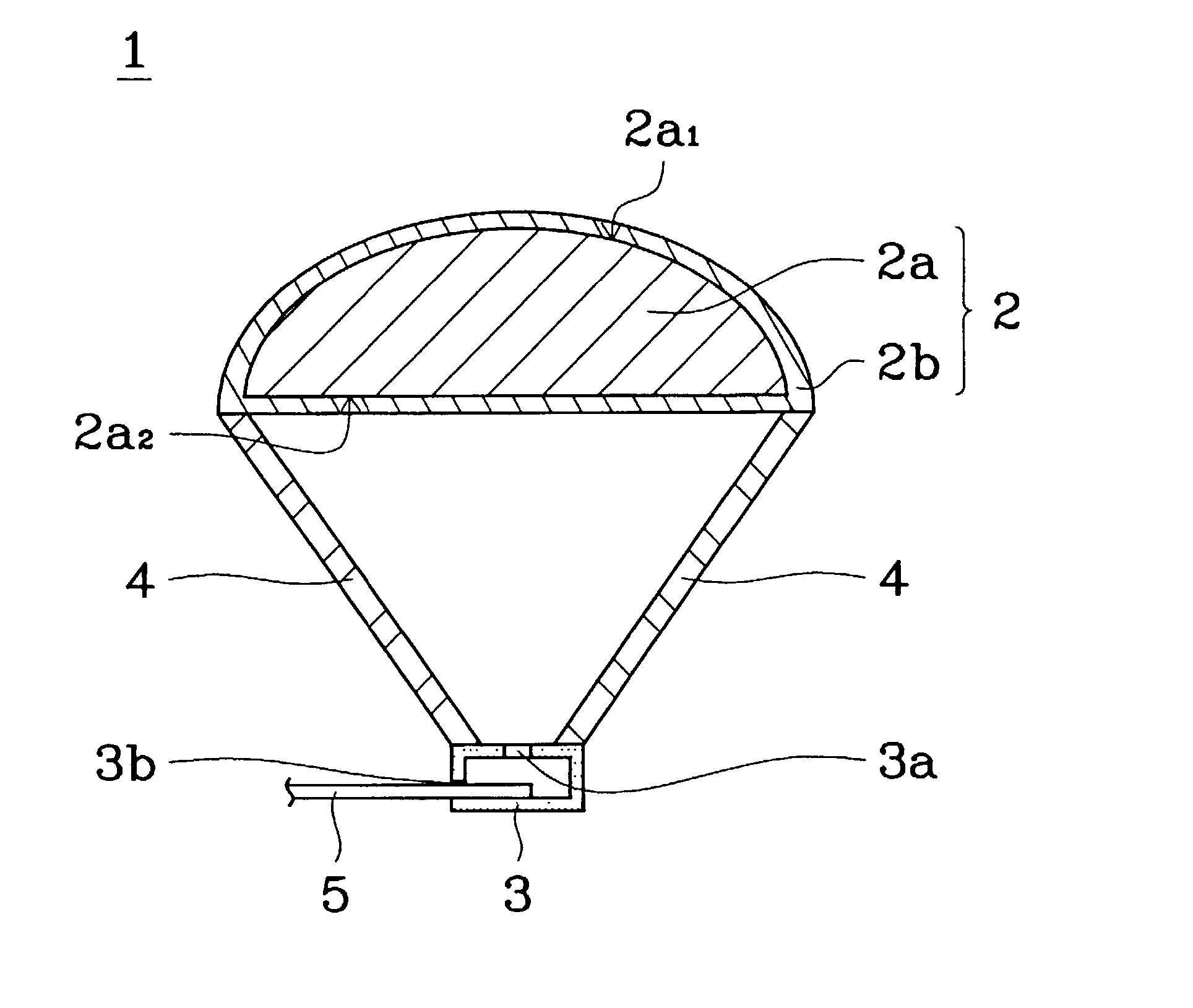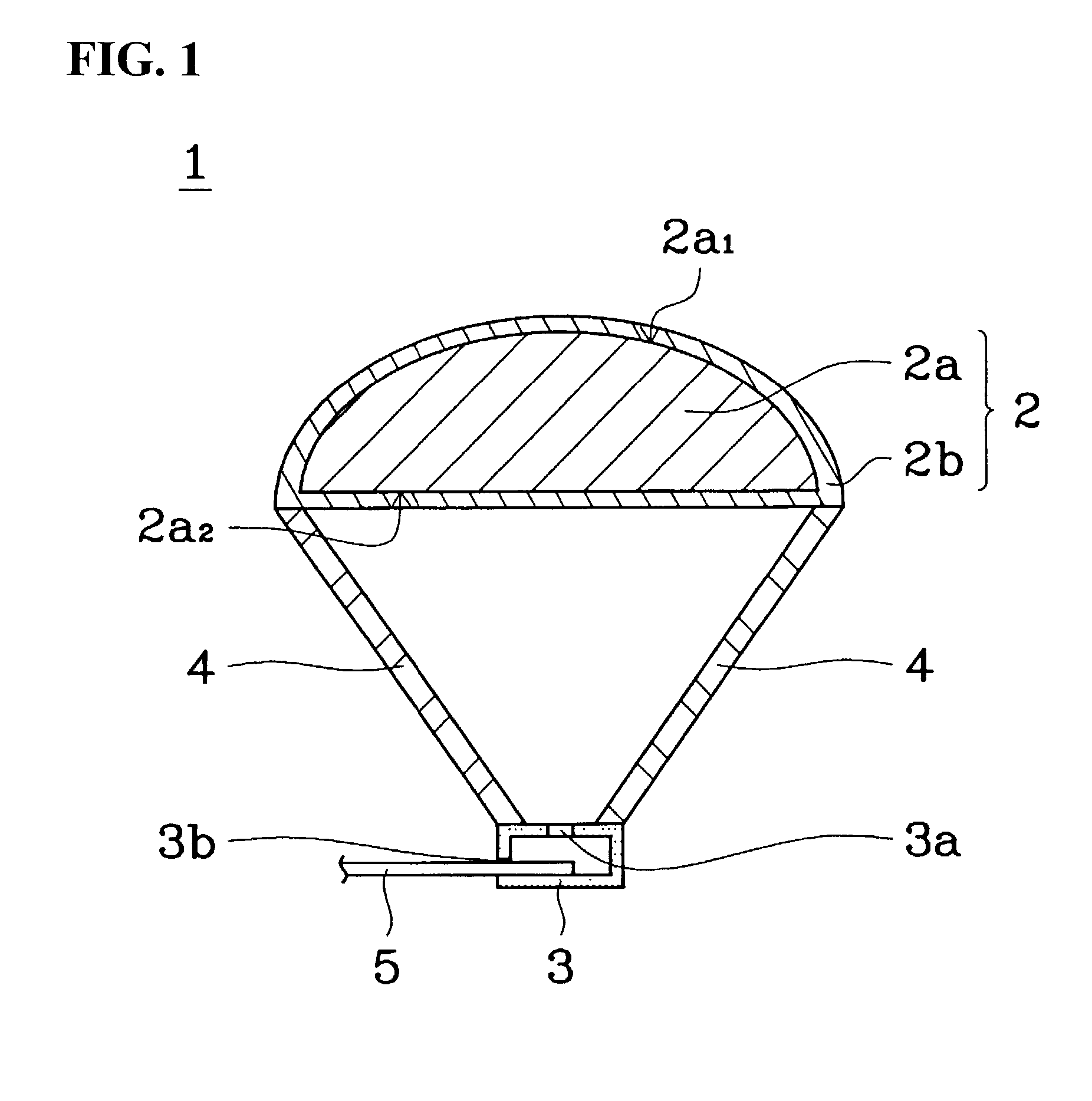Lens antenna
a technology of lens body and antenna, applied in the field of lens body, can solve the problems of lens body being repeatedly exposed to undesired thermal expansion or shrinkage, each of the known detection systems found unsuitable for use, and too expensive in their production cos
- Summary
- Abstract
- Description
- Claims
- Application Information
AI Technical Summary
Benefits of technology
Problems solved by technology
Method used
Image
Examples
Embodiment Construction
[0035] The following is a description explaining how to manufacture the preferred embodiments of the lens body and the matching layer of the lens antenna of the present invention.
[0036] First, the weight of several sorts of resin powders and several sorts of dielectric ceramic powders are taken using a balance so as to prepare materials A to N shown in Table 1. Then, an extruder of a biaxial type with its cylinder temperature at 200.degree. C. is used to knead and thus mix together the various materials in a melted state so as to obtain a kneaded admixture. The obtained admixture is thereafter forced through a head hole so as to be formed into a thread-like (strand) material which is then cooled in water and subsequently cut into pellets. Preferably, each pellet has a diameter of 2 mm and a length of 5 mm. It is also possible to crush the admixture produced by the extruder into pellets by means of a crusher.
[0037] When preparing a composite dielectric material containing several sor...
PUM
| Property | Measurement | Unit |
|---|---|---|
| particle size | aaaaa | aaaaa |
| volume % | aaaaa | aaaaa |
| specific surface area | aaaaa | aaaaa |
Abstract
Description
Claims
Application Information
 Login to View More
Login to View More - R&D
- Intellectual Property
- Life Sciences
- Materials
- Tech Scout
- Unparalleled Data Quality
- Higher Quality Content
- 60% Fewer Hallucinations
Browse by: Latest US Patents, China's latest patents, Technical Efficacy Thesaurus, Application Domain, Technology Topic, Popular Technical Reports.
© 2025 PatSnap. All rights reserved.Legal|Privacy policy|Modern Slavery Act Transparency Statement|Sitemap|About US| Contact US: help@patsnap.com


